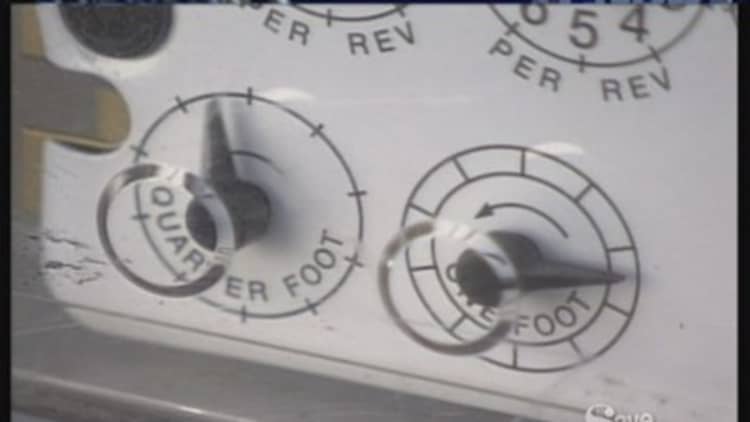
Chilly weather may not be what's driving up your electric bill this year.
A relatively mild winter means U.S. households that heat with electricity could use less energy over the season, according to the Energy Information Administration. But winter electric prices nationwide are 3.1 percent higher than last year, it estimates—and trending upward. (Although oil prices have fallen, electricity in the United States is generated from myriad other sources, including coal and natural gas. So rates haven't benefited from cheaper oil.)
Consumers heating their homes with other fuels have been luckier, with a warmer winter and cheaper fuel combining for substantially lower bills. Household expenditures on natural gas are expected to drop an average 8.1 percent this winter, according to the EIA. Home heating oil spending could fall 32.6 percent, and propane as much as 35.2 percent. The government's outlook on heating oil and natural gas for 2015 predicts prices could go even lower from 2014 averages.
Read MorePrice changes that could affect your wallet in 2015
Not so with your electric bill. Over 2015, electricity rates are expected to rise about one percent, and another 2 percent in 2016. Some customers will see even bigger hikes of 5 to 15 percent. For example, National Grid customers in Rhode Island can expect a 14 percent increase on their January bill as part of a state plan to spread out a 24 percent rate hike throughout the year, while Pacific Gas & Electric Co. customers in California could see an average increase of 5.9 percent in their monthly bill.
To offset rising costs with energy savings, focus on the expenses accounting for the bigger portions of your bill. (See a breakdown below.)
Electric bill breakdown
| Expense | Bill portion |
|---|---|
| Heating | 29% |
| Cooling | 17% |
| Water heating | 14% |
| Appliances | 13% |
| Lighting | 12% |
| Electronics | 4% |
| Other | 11% |
Source: Source: EnergyStar.gov
"Literally, you can insulate yourself against rising energy costs," said Kateri Callahan, president of the Alliance to Save Energy. Making sure your home is properly insulated and sealed can cut heating and cooling bills by as much as 20 percent, she said. Even small, inexpensive projects like sealing gaps around windows and doors make a difference; if there's money in the budget, think about adding insulation to the attic, where there are often more substantial energy leaks.
Read MoreWhat's the best way to pay off holiday debt?
Reprogramming the thermostat offers another easy route to savings. "Each degree you lower your temperature is about a 3 percent savings on heating or cooling costs," Callahan said. Set the thermostat to allow more moderate temperatures when you're at work or asleep, and around the clock if you go on vacation.
Another energy hog: your water heater. By EnergyStar estimates, just dropping the temperature setting from 140 degrees to a still-toasty 120 could save you more than $100 a year in energy costs. That's still plenty hot enough to clean dishes and clothes and have comfortable showers, said Callahan. Buy an inexpensive insulation blanket to stem heat loss, and you could reduce the bill even more.


